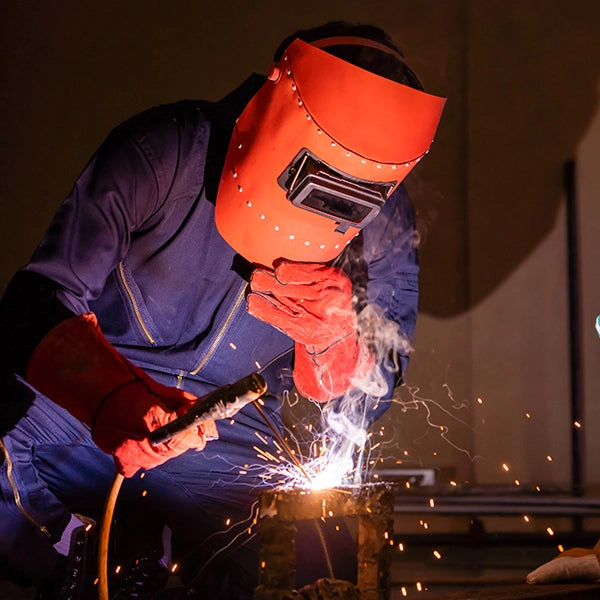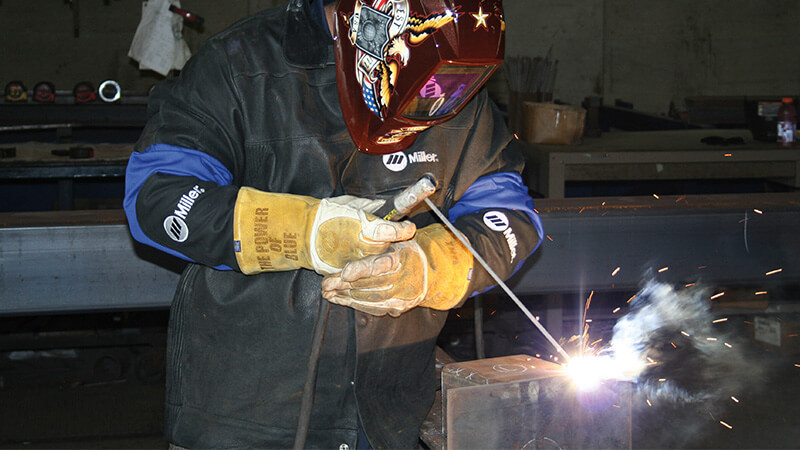Everything you should know about overheating prevention from Montana Mobile Welding and Repair
Typical Welding Repair Service Issues and How to Address Them Properly
Welding fixings frequently come across a series of concerns that can threaten the stability of the end product. Common problems consist of poor infiltration, porosity, and misalignment, amongst others. Each defect presents special difficulties that call for details methods for resolution. Understanding these issues is necessary for welders aiming to improve their skills and results. This discussion will certainly explore these usual welding repair concerns and reliable techniques to resolve them.
Inadequate Infiltration
Poor penetration takes place when the weld steel stops working to completely fuse with the base material, causing weak joints and prospective architectural failings. This problem typically stems from not enough warm input, inaccurate electrode angle, or incorrect welding rate. Welders might encounter inadequate infiltration as a result of a miscalculation of the needed criteria for a certain product density or type. Additionally, contamination on the base material's surface area can hinder effective bonding, intensifying the problem. To resolve insufficient infiltration, welders ought to assure ideal settings on their tools and keep a clean job surface. Normal assessment of welds is advised to recognize any deficiencies early, permitting prompt adjustments and the prevention of compromised structural integrity in bonded assemblies.
Porosity
Porosity is a common flaw in welded joints that shows up as small gas bubbles entraped within the weld metal. This problem can compromise the honesty of the weld, causing decreased stamina and possible failing under tension. Welding. Porosity generally arises from contamination, wetness, or inappropriate welding strategies, which allow gases to get away right into the molten weld swimming pool. To deal with porosity, welders ought to assure proper surface prep work, maintain a tidy workplace, and use appropriate welding specifications. Furthermore, choosing the ideal filler product and shielding gas can mitigate gas entrapment. Regular examination and testing of welds can help identify porosity early, assuring prompt restorative activities are taken, consequently maintaining the top quality and integrity of the bonded framework
Imbalance
Misalignment in welding can occur from various variables, consisting of inappropriate arrangement and thermal growth. Understanding the source is essential for reliable resolution. Numerous improvement techniques are offered to realign elements and ensure structural integrity.
Causes of Misalignment
Welding imbalance usually originates from a selection of underlying problems that can jeopardize architectural honesty. One primary reason is inappropriate fit-up of parts prior to welding, which can cause spaces and unequal surfaces. Variations in thermal growth during the welding process can also cause distortion, specifically if the products being joined have various coefficients of expansion. Additionally, inadequate fixturing and clamping might fall short to hold components firmly in area, bring about movement during welding. Improperly conserved tools, consisting of welding equipments and tools, might introduce variances in the weld grain, more adding to imbalance. Driver mistake, stemming from inadequate training or experience, can additionally play a considerable duty in developing misaligned welds.

Improvement Techniques Readily Available
Addressing misalignment properly calls for a combination of rehabilitative methods customized to the particular problems available. One usual approach is using components or jigs to hold parts in the correct position throughout welding, ensuring constant alignment. Furthermore, pre-heating the products can help lower distortion and boost fit-up. For substantial misalignment, mechanical adjustment strategies, such as using hydraulic jacks or clamps, can be utilized to remedy the setting prior to welding. Post-weld warmth therapy may additionally be necessary to soothe stresses triggered by misalignment. Finally, cautious evaluation and modification during the setup phase can stop misalignment problems from ending up being considerable problems, advertising a smoother welding procedure and improving general architectural honesty.
Distortion
Distortion is a typical difficulty in welding that can develop from numerous elements, consisting of uneven cooling and heating. Recognizing the reasons for distortion is vital for implementing efficient prevention strategies. Addressing this concern not only boosts structural stability however likewise boosts the overall high quality of the weld.
Reasons for Distortion
When subjected to the intense warmth of welding, materials often undertake changes that can lead to distortion. This phenomenon mainly emerges from thermal development and contraction during the welding procedure. As the weld location warms up, the material expands; upon air conditioning, it gets, which can develop interior stress and anxieties. Furthermore, irregular home heating throughout a work surface can intensify these anxieties, causing warping or bending. The kind of product additionally plays a substantial function; steels with differing thermal conductivity and coefficients of expansion might respond differently, resulting in unforeseeable distortions. Bad joint style and insufficient fixturing can contribute to imbalance during welding, increasing the possibility of distortion. Recognizing these reasons is crucial for reliable welding repair work and avoidance techniques.
Prevention Techniques
Efficient prevention strategies for distortion throughout welding focus on regulating warmth input and ensuring correct joint style. Maintaining a consistent warm input helps to decrease thermal expansion and tightening, which can lead to distortion. Using techniques such as pre-heating the workpiece can likewise minimize the temperature slope, promoting consistent heating. In addition, picking proper joint styles, such as T-joints or lap joints, can enhance security and reduce tension focus. Applying proper fixturing to secure the work surfaces in position further help in preserving placement during the welding procedure. Staggered welding series can disperse warm more equally, preventing local distortion. By using these strategies, welders can substantially decrease the likelihood of distortion and enhance the overall high quality of their welds.
Fracturing
Fracturing is a typical problem come across in welding repair services, often arising from numerous elements such as improper cooling rates, product option, or inadequate joint clarke mig welder prep work. The event of cracks can significantly jeopardize the stability of the weld, leading to potential failures during procedure. To address this issue, welders have to initially evaluate the origin causes, guaranteeing that materials work and suitably picked for the particular application. Additionally, managing the air conditioning price throughout the welding process is essential; quick cooling can induce tension and cause breaking. Correct joint style and preparation also add to decreasing the danger. Executing these methods can enhance weld top quality and resilience, inevitably minimizing the likelihood of breaking in finished weldments.

Insufficient Combination
A substantial issue in welding repair work is insufficient fusion, which happens when the weld steel does not sufficiently bond with the base product or previous weld passes - Belgrade Fabrication. This problem can result in weak points in the joint, possibly endangering the integrity of the welded structure. Aspects adding to incomplete fusion include inadequate warm input, improper welding method, and contamination of the surface areas being joined. To address this problem efficiently, welders must assure proper pre-weld cleansing and surface area prep work, in addition to readjust their welding criteria to achieve adequate penetration and fusion. Regular examination during the welding process can additionally help determine incomplete fusion early, allowing for prompt restorative actions to boost the total high quality of the weld
Overheating
While welding fixings can enhance structural stability, overheating presents a significant difficulty that can lead to material degradation. Too much heat during welding can alter the mechanical homes of metals, causing lowered strength, increased brittleness, and bending. This phenomenon is particularly important in high-stress applications where structural reliability is paramount. Recognizing getting too hot can include visual examinations for staining or distortion, as well as keeping an eye on temperature throughout the welding procedure. To minimize the threats connected with getting too hot, welders ought to utilize suitable techniques, such as regulating warm input, adjusting travel like this speed, and utilizing appropriate filler products. Additionally, implementing pre- and post-weld warm therapies can assist restore product buildings and enhance the general top quality of the repair service, guaranteeing lasting performance and security.
Regularly Asked Concerns
What Are the Usual Signs of a Welding Defect?

Just How Can I Examine My Welds for Quality?
To test welds for quality, one can utilize aesthetic examinations, ultrasonic screening, and radiographic approaches. Each technique guarantees architectural integrity, determines issues, and validates adherence to defined criteria, eventually improving the integrity of the welded joints.
What Security Safety Measures Should I Take While Welding?
When welding, one must prioritize safety by wearing suitable individual safety tools, making sure appropriate air flow, securing combustible materials away, preserving a clean work space, and knowing surroundings to avoid injuries and crashes.
Can I Fix a Weld Without Redesigning the Entire Joint?
Repairing a weld without redesigning the entire joint is possible, depending on the damages (Montana Mobile Welding Get More Info and Repair Belgrade Welding). Strategies such as grinding, adding filler product, or using a welding process can successfully deal with specific defects while preserving the bordering structure
What Equipment Are Vital for Effective Welding Fixes?
Vital devices for efficient welding repair work consist of a welding device, cord brush, mill, protective gear, clamps, and filler products. Each tool plays a vital function in making sure top quality and security throughout the repair process. Porosity usually occurs from contamination, moisture, or inappropriate welding strategies, which enable gases to run away into the molten weld pool. Poorly kept equipment, consisting of welding makers and devices, might introduce disparities in the weld grain, further contributing to misalignment. When subjected to the intense warmth of welding, products often go through modifications that can lead to distortion. Fracturing is a common problem experienced in welding fixings, usually resulting from different variables such as incorrect air conditioning prices, product selection, or poor joint prep work. A significant problem in welding repair services is incomplete combination, which happens when the weld metal does not sufficiently bond with the base product or previous weld passes.